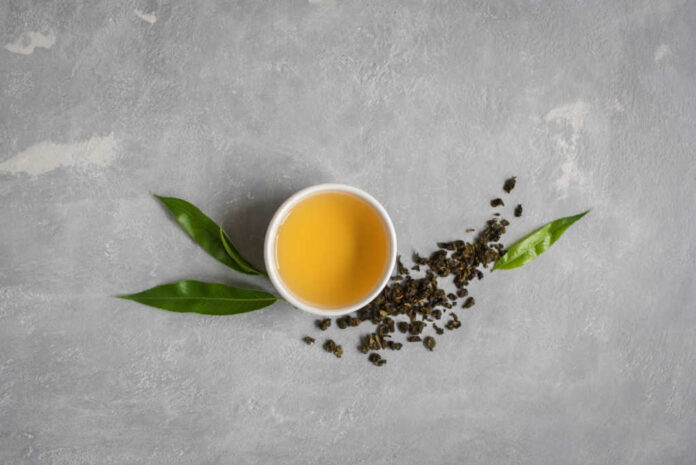
Though oolong tea is less popular than black and green tea, it still has many benefits that everyone should know.
Oolong tea is made from the leaves of the Camellia sinensis plant, just like black and green teas are. However, oolong leaves are partially oxidized before being dried and later steeped. This partial oxidation gives oolong its unique flavor and color.
Understanding the Different Types of Tea
White, green, oolong, black, and puer tea are all made from the leaves of the Camellia sinensis plant. These leaves are processed slightly differently to create different flavors and aromas.
White tea is made from the youngest leaves that are picked before they open. The leaves are then quickly dried and minimally processed to prevent oxidation. This results in a light-colored tea with a delicate flavor and sweet aftertaste.
Green tea is made from mature leaves that are briefly heated to stop oxidation. This preserves the natural flavors of the fresh leaves.
Oolong tea is semi-oxidized, giving its unique flavor profile, ranging in taste from fruity to woodsy depending on how much oxidation they undergo. Oolong tea is typically described as halfway between green and black teas.
Black tea undergoes full oxidation giving it the characteristic deep red coloring and strong earthy flavors.
Puer is a black tea that has undergone a more complex fermentation process, resulting in earthy notes with hints of sweetness or bitterness depending on how it’s brewed.
Herbal teas add flowers and herbs to give them extra flavorings.
Promoting Good Health by Drinking Oolong Tea
While all types of tea are associated with many health benefits, the extra oxidation process involved in oolong tea may provide even more advantages over the much more common green varieties.
The process of oxidation transforms antioxidant catechins into compounds called theasinensins, which are closely associated with numerous health benefits:
- Antioxidant – reduces potential DNA and cell damage by reactive oxygen species, a known contributor to many chronic diseases.
- Anti-inflammatory – polyphenol antioxidants also reduce inflammation, providing further protection from damage and disease.
- Anti-cancer – may inhibit invasion, progression, and proliferation of cancer cells.
- Anti-microbial – theasinensin A may inhibit the function of viral proteins, effectively weakening bacteria and viruses and reducing infectivity.
- Anti-obesity – by inhibiting pancreatic lipase activity, oolong may affect lipid (fat) absorption and increase lipid excretion.
- Heart disease prevention – as lipid uptake is reduced, cholesterol levels can improve, and the progression of hypertension and atherosclerosis may be inhibited.
- Hypoglycemic – can help people with type 2 diabetes or pre-diabetes by increasing glucose uptake and insulin sensitivity.
It can be brewed using loose leaves or tea bags, making it convenient for on-the-go drinkers. If you’re looking for a healthy, affordable beverage that tastes great, give oolong tea a try today.






















